Good morning everybody, I hope you have all had another lovely weekend!
Here are your tasks for today:
Maths
Mental Arithmetic: Rounding to the nearest 10.
All this week we will be revisiting and revising our knowledge of rounding whole numbers to the nearest 10, 100 and 1000 and today we are focusing on rounding to the nearest 10. Remember, if a given number is halfway or more between two 10s, it rounds up to the next 10. If a given number if less than halfway between two 10s it rounds down to the previous 10.
Today I would like you to visit this Rocket Rounding Game to remind yourself of rounding to the nearest 10. You can choose whether to use the numberline or not, but I would recommend it to begin with so you can physically see which 10 your given number is closest to.
You may also choose to round numbers up to 99, 999 or 9,999 to the nearest 10. Again, I would recommend starting with rounding numbers up to 99 and then move up as you become more comfortable with rounding.
Have fun and let me know how you get on!
Negative Numbers.
We have reached the end of our Maths No Problem measurements chapter with just one lesson left on reading temperatures. So for the next few days I am going to set you some learning tasks related to negative numbers before we complete the MNP lesson.
Today, I would like you to read and complete this negative numbers sheet. It is a recap of negative numberlines, counting forwards and backwards through zero and labelling a thermometer. Please work through each question in turn, copying into your journals.
Discuss with your child how digits go forwards when counting numbers backwards past zero, using a numberline to show this will help.
If your child completes this sheet quickly, please ask them to draw and label 2 of their own numberlines; the first counting in 9s from zero up to 108 and down to -108, and the second counting in 12s from zero up to 144 and down to -144.
English
Reading: Well done to those of you who are reading widely and completing quizzes, keep reading for at least 20 minutes a day and regularly complete quizzes for the books you have read.
If you have a Lexia account, please log on and complete at least 15 minutes a day.
Don’t forget your Book Buzzes! If you have recently read a book which you would really like to Buzz, send it through to me and I will include it in next week’s Home Learning blog post.
Writing: Last Friday I asked you to use your planning to write the introductory paragraph to your information text about your new rare creature. Today I would like you to complete the rest of your information text. Think about using lots of different sentence starters so your text does not sound repetitive and boring. We have practised a variety of different adverbials and sentence starters so be sure to look through your journal over the past few weeks and include some of those starters in your information text.
If you have already written your texts, as I know some of you were keen to crack on last Friday and over the weekend, please take the time today to read back through and edit your writing. Check for spelling, punctuation and grammar mistakes, check you have used adverbials and different starters to open your sentences, check you have used the most imaginative and descriptive vocabulary you can think of and check your paragraphs. Edit your work to make any corrections you may find.
Remember also to use our everyday toolkits; punctuation, capital letters, commas in clauses, paragraphs and exciting vocabulary. I know you can all use these really well Year 5 and I am really excited to see your finished information texts!
Topic – History
I am absolutely thrilled with all the History learning you have been sending me Year 5, well done and thank you! I have loved your questions and am so pleased to see you putting your historical skills into action.
This week we are going to think a little more about local famous landmarks in and around Weymouth and what it may have been like to be at these landmarks at key events in time.
Please have a look through the photographs below and read the captions attached to them.
Your task this week is to choose one and write a diary entry as if you were one of the people spectating in the photograph. You could include in your diary entry information on what you did that day, where you went, who with, what you were wearing, the weather, what you saw, how it felt, what you think may happen next and anything else you think a person of that time may recount in a personal diary.
I know how creative you all are Year 5 and how engaged you are in this project and I am really excited to see your diary entries and your empathy for local people in the past!
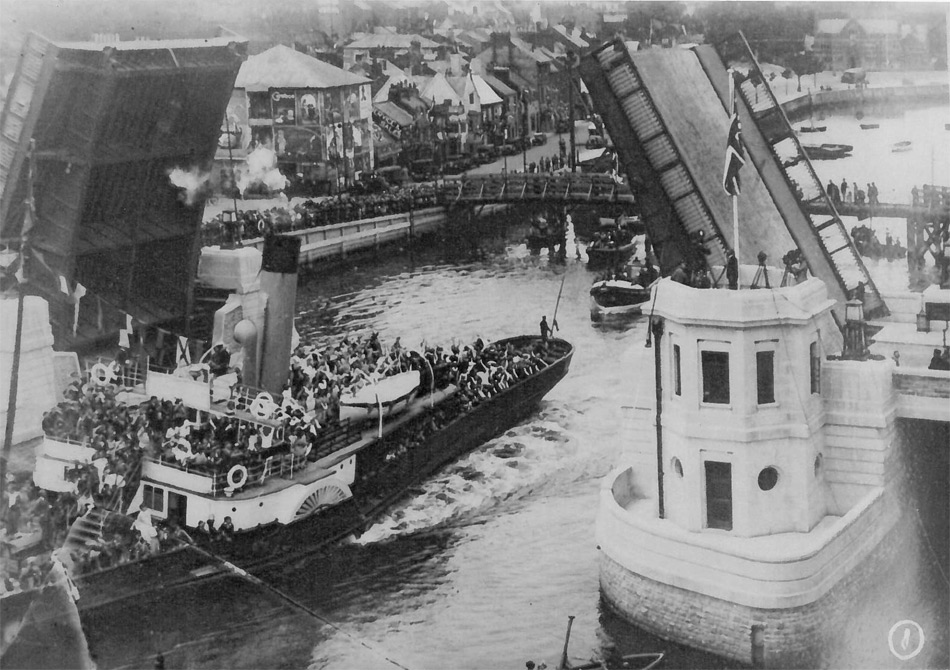
The Town Bridge as we know it today was opened in 1930 by the Duke of York, later to become King George VI. It joined the two rival townships of Melcombe Regis and Weymouth and enabled traffic, commerce and residents to move freely between the two.
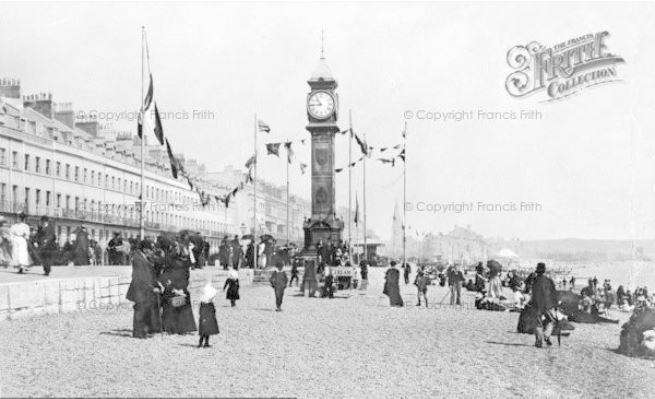
Weymouth’s Jubilee Clock was built in 1888 to commemorate Queen Victoria’s Golden Jubilee, 50 years of reign as Queen of England. This photo shows the clock in 1889 on a typical summer day, not unlike modern times!
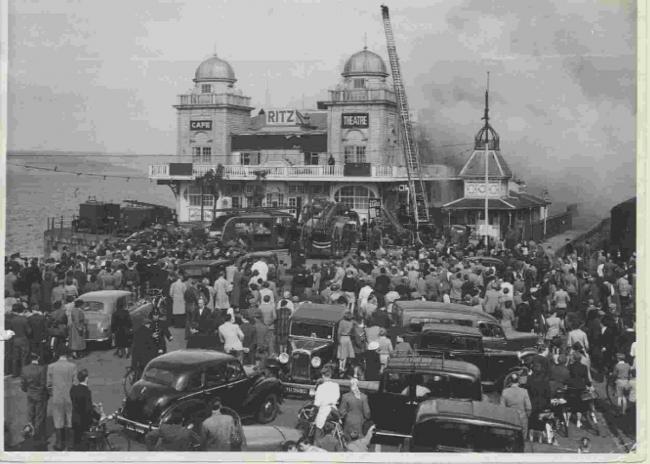
On the afternoon of the 13th of April 1954 disaster struck Weymouth Pavilion with the building catching fire during refurbishment. The wooden, Edwardian theatre took little more than an hour to burn despite the efforts of ten fire pumps from around the county. Practically the whole of Weymouth turned out to watch the Pavilion burn down.
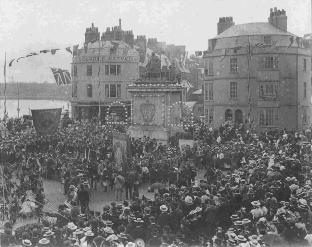
As a tribute to King George III, the Kings Statue was unveiled in 1809, 50 years after his ascension to the throne. This photo shows the celebrations of Queen Victoria’s Diamond Jubilee, 60 years on the throne, by the King’s Statue in 1897.
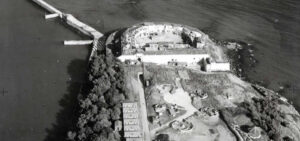
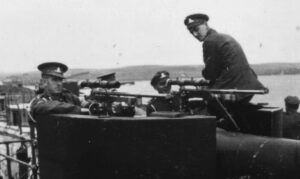
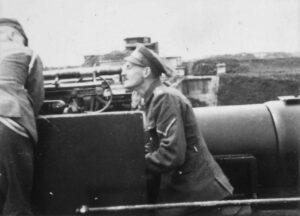
Weymouth Nothe Fort was built between 1860-1872 to protect the Naval Harbour at Portland. It saw it’s most military action during World War 2 when anti-aircraft guns were used to defend Weymouth and Portland. Here you can see the anti-aircraft gunners manning the guns.



